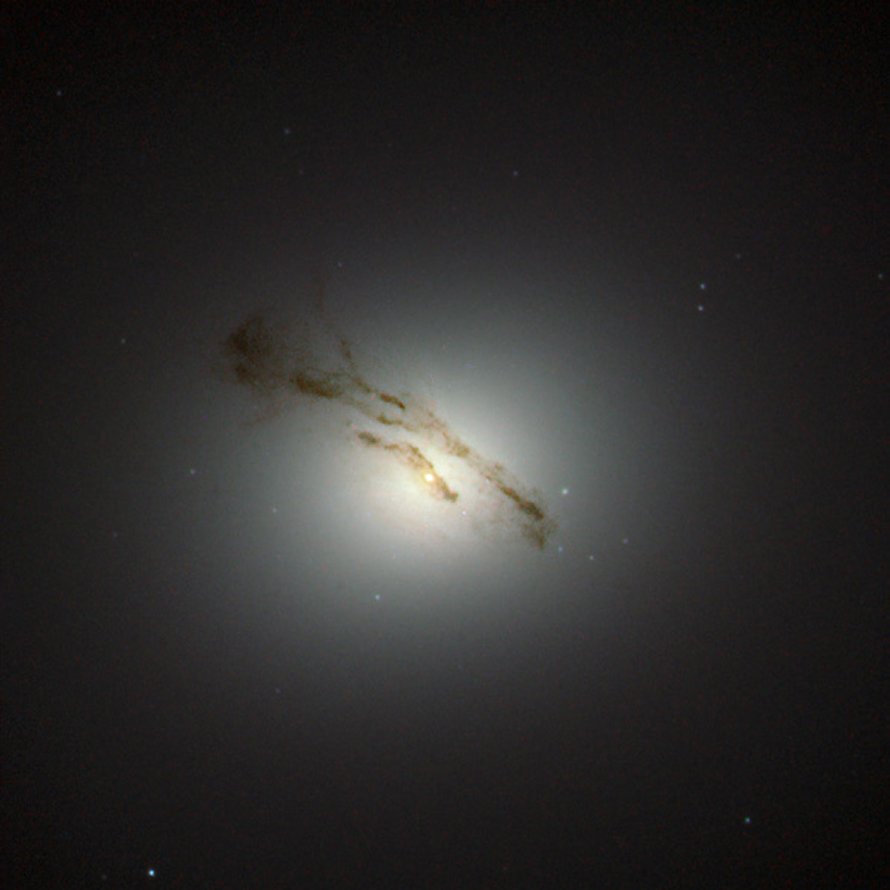M84 (NGC 4374)
Messier 84 (NGC 4374) is a lenticular galaxy located in the constellation Virgo in the Virgo Cluster of galaxies. M84 is 55000000 light years away from Earth.
M84 is best viewed during late spring, is magnitude 10.1, and can be viewed with small telescope. M84 is 6.5' x 5.6' in apparent size. For reference, the full moon is 30'.
Observing difficulty: Hard
- Name:
- Type:
- lenticular galaxy
- Constellation:
- Virgo
- NGC or IC:
- NGC 4374
- Magnitude:
- 10.1
- Viewing:
- small telescope
- Size:
- 6.5' x 5.6'
- Distance (light years):
- 55000000 LY
- RA:
- 12h 25.1m
- Dec:
- 12 54'
- Season:
- late spring
- Galaxy group:
- Virgo Cluster
- Messier Marathon #:
- 53
* The naked eye can see up to magnitude ~7-8 objects under ideal dark sky conditions.
A Scientific Investigation of the Lenticular Galaxy
Messier 84, or M84, is a lenticular galaxy located in the constellation Virgo, more precisely in the Virgo Cluster of galaxies. Renowned for its peculiar motion and the presence of two possible jets of matter, M84 presents unique opportunities for astronomers and astrophysicists to investigate galactic dynamics, and the behavior of matter in extreme environments.
Characteristics of M84
One of the standout features of M84 is its classification as a lenticular galaxy. Lenticular galaxies like M84 are intermediate types that share characteristics with both elliptical and spiral galaxies. In M84's case, it presents an elliptical-like appearance with a faint disk structure, but lacks the prominent spiral arms seen in classic spiral galaxies.
A major point of interest in M84 is the supermassive black hole suspected to reside at its core. Observations made using the Hubble Space Telescope have revealed two anomalous jets of matter possibly emanating from a central black hole. The black hole itself is estimated to have a mass of approximately 1.5 billion solar masses, making it one of the heaviest black holes ever discovered.
Magnitude and Size
M84 has an apparent magnitude of 9.1, making it a challenging target for naked-eye observers but feasible for small telescopes and high-powered binoculars. The galaxy occupies an area of about 6.5 x 5.6 arcminutes on the celestial sphere, translating to a linear diameter of approximately 60,000 light-years considering its estimated distance of 60 million light-years from Earth.
Finding and Viewing M84
Located in the constellation Virgo, M84 can be found relatively easily using the right ascension and declination coordinates. However, the Virgo Cluster, where M84 resides, is home to several other Messier galaxies, which can make identifying M84 specifically somewhat tricky.
The most convenient method to locate M84 involves starting from the star Denebola, at the tail of Leo, and moving eastwards. M84, along with its neighbor M86, forms part of Markarian's Chain, a striking stretch of galaxies that make a curved line through the heart of the Virgo Cluster.
Through a small telescope, M84 will appear as a fuzzy, slightly elongated patch of light with a brighter center. Details such as the faint disk or jets of matter are beyond the reach of amateur telescopes and require professional-grade equipment to observe.
In conclusion, M84 is a captivating subject for astronomical study, providing a unique case study in galactic structure, black hole activity, and celestial dynamics. Its location in the rich Virgo Cluster further enhances its appeal to astronomers, offering an abundance of neighboring galaxies for comparison and contrast.



